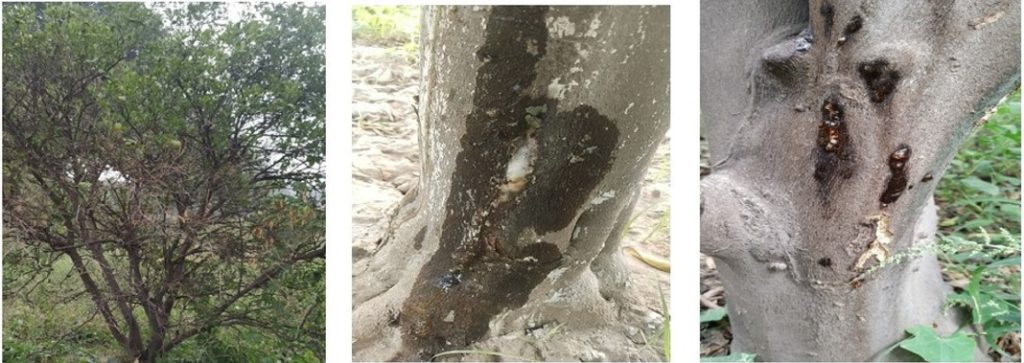Guwahati, Sep 5: Scientists have detected for the first time a pathogen Phytopythium vexans which causes gummosis and root rot in Khasi Mandarin, an economically important crop in the citrus growing regions in northeastern India.
A comprehensive survey conducted between October 2021 and 2023 across Meghalaya, Tripura, Manipur, Arunachal Pradesh, Sikkim, Nagaland, and Assam has revealed the presence of a devastating pathogen, Phytopythium vexans, causing widespread gummosis and root rot in Khasi mandarin trees.
The work was done by scientists from Division of Plant Pathology, ICAR-Indian Agricultural Research Institute and were helped by scientists from different states of Northeast. The survey revealed a disease incidence ranging from 5% to 95% in mature Khasi mandarin trees.
Northeast India is recognized as an important part of the Indo-Burma biodiversity hotspot and is one of the 25 global biodiversity hotspots accepted at present. This is also considered as the richest and one of the most endangered places for plant survival in the world. This area is known as one of the centers of origin of various Citrus species.
Among the Citrus crops available in the northeastern region, Khasi mandarin is the most economically important one and plays a vital role in the socio-economic development of the people in this region. Khasi mandarin is well known for its quality, fruit colour, unique sugar-acid blend and shelf life which make it the most popular citrus cultivar in the northeastern region of the country. Khasi Mandarin has got a GI tag.

The symptoms are alarming: leaves turning yellow and dropping prematurely, twigs dying back, gum oozing from the bark, and feeder roots deteriorating. The pathogen was isolated, and its identity was confirmed through cultural, morphological, and multilocus phylogenetic analyses.
It has been reported that P. vexans are associated with apple and pear decline in the Saiss plain of Morocco and root rot on mandarin in Thailand and on Durian in Vietnam. “This is the first report of Phytopythium vexans in Khasi Mandarin.
Gummosis is the major disease which destroys the backbone of the citrus industry and is caused by the Phytophthora species which affects citrus roots, trunk and fruits. Root rot causes a slow decline of the tree, especially in new plantings. The leaves turn light green or yellow and may drop, depending on the amount of infection. The disease destroys the feeder roots of susceptible rootstocks.
“This finding is significantly important for the development of a successful disease management strategy in India” the scientists said in the paper.
Research has shown that Mandarins are highly vulnerable to many types of pathogens. The growers in general are facing a serious problem of decline that is due to various causes. Previously it was thought that it happens due to various factors, including soil disorders, nutritional deficiencies, and parasitic agents such as fungi and greening pathogens.
“In the northeastern region 42 insect species are found to have major pest status in the mandarin and other citrus species cultivation aggravating the citrus decline problem” a research study found out.




